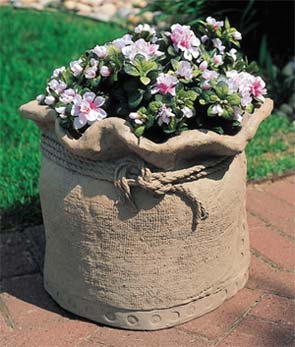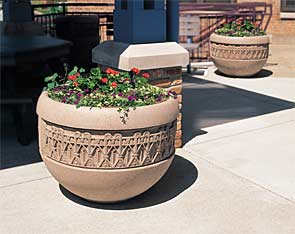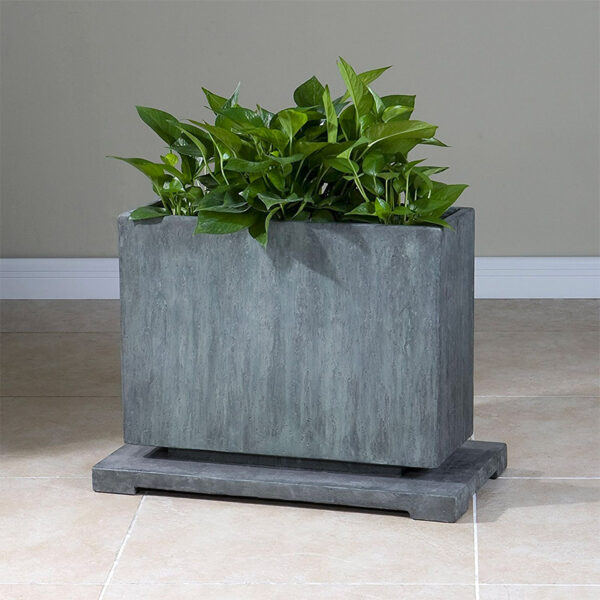When it comes to enhancing the aesthetic of your home or garden, decorative concrete planters can be a game changer. In my journey as a gardening enthusiast, I discovered that the right planter not only showcases your plants beautifully but also complements the overall design of your outdoor and indoor spaces. In this article, we’ll explore everything you need to know about decorative concrete planters, including types, benefits, design ideas, maintenance tips, and FAQs. Let’s dig in!
The Allure of Decorative Concrete Planters
Concrete planters have gained immense popularity due to their durability, versatility, and modern aesthetic. Unlike traditional clay or plastic pots, concrete offers a unique texture and finish that can elevate any space. Here’s why they stand out:
- Durability: Concrete planters can withstand various weather conditions, making them ideal for both indoor and outdoor use.
- Versatility: They can be shaped and styled to fit virtually any décor theme.
- Low Maintenance: Unlike wooden or ceramic pots, concrete requires minimal upkeep.
Types of Decorative Concrete Planters
When considering decorative concrete planters, it’s essential to understand the different types available to choose the one that fits your needs.
1. Traditional Concrete Planters
These are solid structures made entirely of concrete. They are often minimalist in design, emphasizing the raw beauty of the material.

2. Lightweight Concrete Planters
Made with lightweight aggregates, these planters are easier to move around, making them perfect for changing your garden layout.
3. Colored Concrete Planters
You can integrate dyes or pigments into the concrete mix, allowing for vibrant and eye-catching hues that cater to your style.

4. Textured Concrete Planters
These feature various textures, from smooth to rough finishes, providing an interesting visual element to your plantings.
Benefits of Using Decorative Concrete Planters
Now that we’ve explored the types, let’s delve into the myriad benefits of choosing decorative concrete planters.

1. Enhanced Aesthetic Appeal
The unique designs and finishes available in decorative concrete can enhance the visual appeal of your space, making it more inviting.
2. Weather Resistance
Concrete is incredibly resilient against harsh weather. Rain, snow, or extreme sunlight won’t affect the planter’s integrity.

3. Eco-Friendly Option
Concrete can be made from recycled materials, making it an environmentally friendly option for gardeners.
4. Long-lasting Investment
With minimal maintenance, decorative concrete planters can last for decades, proving to be a wise investment for your garden.

Factors to Consider When Choosing Decorative Concrete Planters
Before purchasing decorative concrete planters, consider the following factors to ensure you make the right investment:
1. Size and Shape
The planter’s size should align with the plants you intend to grow. Ensure it has adequate depth for root development.

2. Drainage Options
Choose planters with proper drainage to prevent water from accumulating and damaging your plants.
3. Design Style
Select a design that harmonizes with your landscaping and home style, whether it be modern, rustic, or contemporary.

4. Weight
Consider whether you’ll need to move your planters often. Heavier planters provide stability, while lightweight options allow for mobility.
Top Decorative Concrete Planters Ideas
Here are some creative design ideas to inspire you in selecting decorative concrete planters:
1. Vertical Garden Planters
Utilize wall-mounted concrete planters to create a stunning vertical garden. They save space and add dimension to your walls.
2. Clustered Planters
Group various sizes of concrete planters together for a layered look that creates visual interest in your garden.
3. Decorative Edging
Use smaller concrete blocks to edge your flower beds or pathways. They can serve as both decoration and structure.
4. Unique Shapes
Consider geometric or abstract shapes that reflect your personal style and stand out in your garden.
Maintaining Your Decorative Concrete Planters
With proper care, your decorative concrete planters can remain beautiful and functional for years to come. Here are some maintenance tips:
1. Cleaning
Regularly clean your planters to prevent dirt and debris buildup. A soft brush and mild detergent work wonders.
2. Sealing
Applying a concrete sealer can protect your planters from moisture and staining, helping to prolong their life.
3. Winter Care
If you live in an area with harsh winters, consider moving your planters indoors or covering them to prevent cracking.
Pros and Cons of Decorative Concrete Planters
As with any product, decorative concrete planters come with their own sets of advantages and disadvantages. Here’s a closer look:
| Pros | Cons |
|---|---|
| Durable and long-lasting | Can be heavy and difficult to move |
| Variety of designs and finishes | May require sealing to prevent stains |
| Resistant to harsh weather | Can crack in extreme temperatures |
| Eco-friendly options available | Initial cost can be higher than plastic |
Where to Buy Decorative Concrete Planters
Finding the right place to purchase your decorative concrete planters is crucial. Here are some options:
1. Local Garden Centers
Visiting a local garden center allows you to see the planters in person and choose the style and size that suits your needs.
2. Online Retailers
E-commerce platforms like Amazon, Wayfair, or Etsy offer a wide selection of decorative concrete planters, often with customer reviews to guide your choice.
3. Craft and Home Improvement Stores
Stores like Home Depot or Lowe’s frequently carry decorative concrete planters, often at competitive prices.
FAQs About Decorative Concrete Planters
1. Are decorative concrete planters expensive?
The cost can vary based on size, design, and retailer. Generally, they are more expensive than plastic planters but offer durability and aesthetic appeal.
2. Can concrete planters be painted?
Yes! You can paint concrete planters with outdoor-grade paint to match your garden’s décor.
3. How do I prevent my concrete planters from cracking?
Using a proper sealant and ensuring adequate drainage can help prevent cracking due to moisture buildup and freezing temperatures.
4. Can I use decorative concrete planters indoors?
Absolutely! They can add a rustic or modern touch to any indoor space, just ensure you use liners to prevent water damage to your floors.
5. What plants are best suited for concrete planters?
Almost any plant can thrive in decorative concrete planters as long as the size and drainage are appropriate. Consider succulents, herbs, or flowering plants.
Conclusion
Decorative concrete planters are more than just functional items; they are design elements that can transform your garden and living spaces. With their durability, variety, and low maintenance, they are a worthy investment for any plant lover. I hope this guide helps you explore the beauty and practicality of decorative concrete planters, and inspires you to create a stunning garden environment that reflects your personal style.